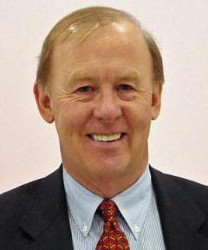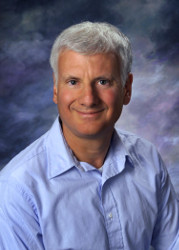Posted by Elena del Valle on February 6, 2018
By Jay Gronlund
President, The Pathfinder Group

Jay Gronlund, president, The Pathfinder Group
Photo: Jay Gronlund
Most people think “branding” is simply about creating a catchy, memorable name for a product, service, organization and even people. However branding is much more complex. Good branding starts with the development of a message or impression that reflects the unique benefits and characteristics of that entity, and then creating a name that ideally communicates its qualities and personality to targeted customers. There are numerous approaches and philosophies for brand naming. Here are two contrasting examples: President Donald Trump’s tendency to coin descriptive, simplistic (and usually negative) labels on his adversaries that reflect his opinion of them, and the more subconscious, subliminal use of “phonologics” by pharmaceutical companies to create brand names for their products.
Click to read the entire article Brand Naming, The Unsubtle (Trump) And The Subtle (Pharmaceuticals)
Posted by Elena del Valle on January 29, 2018

Eddie Yoon, founder, Eddiewouldgrow, LLC
Photo: Eddie Yoon
A podcast interview with Eddie Yoon, founder, Eddiewouldgrow is available in the Podcast Section of Hispanic Marketing & Public Relations, HispanicMPR.com. During the podcast, he discusses Superconsumers with Elena del Valle, host of the HispanicMPR.com podcast.
Eddie is author of Superconsumers A Simple, Speedy and Sustainable Path to Superior Growth. Prior to founding Eddiewouldgrow, LLC, a think tank and advisory firm on growth, he was a partner at The Cambridge Group. According to his biography, his work over the past two decades has driven over $5 billion of annual profitable growth in consumer packaged goods, durables, robotics and energy; and he is one of the world’s leading experts on finding and monetizing superconsumers to grow and even create new categories.
To listen to the interview, scroll down until you see “Podcast Eddie Yoon” on the right hand side, then select “HMPR ” and click on the play button below or download the MP3 file to your iPod or MP3 player to listen on the go, in your car or at home from the RSS feed. Some software will not allow flash, which may be necessary for the play button and podcast player. If that is your case, you will need to download the file to play it. To download it, click on the arrow of the recording you wish to copy and save it to disk. The podcast will remain listed in the January 2018 section of the podcast archive.
Posted by Elena del Valle on January 22, 2018

Danielle Gruppo, CEO, InternAlliance
Photo: Sharon K. Merkel
A podcast interview with Danielle Gruppo, chief executive officer, InternAlliance is available in the Podcast Section of Hispanic Marketing & Public Relations, HispanicMPR.com. During the podcast, she discusses the business of internships with Elena del Valle, host of the HispanicMPR.com podcast.
Danielle is also the founder of InternAlliance, an online service that connects qualified college students to viable internship opportunities. She has 25 years of experiences as a human resources executive developing and executing talent management and human capital strategies for Fortune 250 and privately held companies in energy, healthcare, services, and manufacturing.
She is a results-oriented achiever dedicated to building programs that foster a corporate culture of employee engagement, inclusion, and compliance by employing keen business acumen and demonstrating key expertise.
To listen to the interview, click on the play button below, scroll down until you see “Podcast” on the right hand side, then select “HMPR Danielle Gruppo” and click on the play button below or download the MP3 file to your iPod or MP3 player to listen on the go, in your car or at home from the RSS feed. Some software will not allow flash, which may be necessary for the play button and podcast player. If that is your case, you will need to download the file to play it. To download it, click on the arrow of the recording you wish to copy and save it to disk. The podcast will remain listed in the January 2018 section of the podcast archive.
Posted by Elena del Valle on January 15, 2018

Joseph Pizzorno, N.D., author, The Toxin Solution
Photo: Joseph Pizzorno
A podcast interview with author Joseph Pizzorno, N.D. is available in the Podcast Section of Hispanic Marketing & Public Relations, HispanicMPR.com. During the podcast, he discusses The Toxin Solution (see Naturopath discusses hidden toxins in our lives and how to be rid of them) with Elena del Valle, host of the HispanicMPR.com podcast.
He has been an academic, intellectual and clinical leader in functional integrative and natural medicine for four decades. Pizzorno is also editor-in-chief, Integrative Medicine, and A Clinician’s Journal; as well as president, SaluGenecists, Inc., and treasurer, board of directors, Institute for Functional Medicine, and founding president, Bastyr University.
To listen to the interview, scroll down until you see “Podcast Joseph Pizzorno, ND” on the right hand side, then select “HMPR ” and click on the play button below or download the MP3 file to your iPod or MP3 player to listen on the go, in your car or at home from the RSS feed. Some software will not allow flash, which may be necessary for the play button and podcast player. If that is your case, you will need to download the file to play it. To download it, click on the arrow of the recording you wish to copy and save it to disk. The podcast will remain listed in the January 2018 section of the podcast archive.
Posted by Elena del Valle on January 8, 2018

János Mészáros, author, Kings and Crosses
Photo: János Mészáros
A podcast interview with graphic novel author János Mészáros is available in the Podcast Section of Hispanic Marketing & Public Relations, HispanicMPR.com. During the podcast, he discusses Kings and Crosses with Elena del Valle, host of the HispanicMPR.com podcast.
János, who writes under the pen name Sinonimo, is owner of Libub Group Kereskedelmi És Zolgátató Kft. He spent over 20 years in management consultancy in Hungary and across Europe. Kings and Crosses is his first fiction work. He created the story and the story board for the graphic novel.
To listen to the interview, scroll down until you see “Podcast János Mészáros” on the right hand side, then select “HMPR ” and click on the play button below or download the MP3 file to your iPod or MP3 player to listen on the go, in your car or at home from the RSS feed. Some software will not allow flash, which may be necessary for the play button and podcast player. If that is your case, you will need to download the file to play it. To download it, click on the arrow of the recording you wish to copy and save it to disk. The podcast will remain listed in the January 2018 section of the podcast archive.
Posted by Elena del Valle on December 13, 2017

Lucas Puente, economist, Thumbtack
Photo: Lucas Puente
A podcast interview with Lucas Puente, economist, Thumbtack, is available in the Podcast Section of Hispanic Marketing & Public Relations, HispanicMPR.com. During the podcast, he discusses 2017 Thumbtack Small Business Friendliness Survey with Elena del Valle, host of the HispanicMPR.com podcast.
Lucas studies Thumbtack’s marketplace dynamics and the policy challenges facing small service businesses. Passionate about using data to better understand the American economy, Lucas’ previous research topics include decision making at the Federal Reserve and the role of technology in the contemporary labor market. He has a master’s degree and Ph.D. from Stanford University and is a graduate of the University of Georgia.
To listen to the interview, scroll down until you see “Podcast” on the right hand side, then select “HMPR Lucas Puente” and click on the play button below or download the MP3 file to your iPod or MP3 player to listen on the go, in your car or at home from the RSS feed. Some software will not allow flash, which may be necessary for the play button and podcast player. If that is your case, you will need to download the file to play it. To download it, click on the arrow of the recording you wish to copy and save it to disk. The podcast will remain listed in the December 2017 section of the podcast archive.
Posted by Elena del Valle on December 6, 2017


Linda Adams and Abby Curnow-Chavez, contributing authors, The Loyalist Team
Photos: Linda Adams, Abby Curnow-Chavez
A podcast interview with authors Linda Adams and Abby Curnow-Chavez is available in the Podcast Section of Hispanic Marketing & Public Relations, HispanicMPR.com. During the podcast, they discuss The Loyalist Team with Elena del Valle, host of the HispanicMPR.com podcast.
Linda and Abby Curnow-Chavez are contributing authors of The Loyalist Team How Trust, Candor, and Authenticity Create Great Organizations. They honed their expertise inside some of the largest and most powerful businesses operating today. The authors of have led the human resources, talent management, leadership development, and organizational effectiveness functions of Ford Motor Company, PepsiCo, Accenture, Newmont Mining and Level 3 Communications. Currently, they are two of four partners who comprise The Trispective Group, catering to companies like PetSmart, Equinix, Kaiser Permanente, Hitachi Data Systems, and Vail Resorts.
To listen to the interview, click on the play button below, scroll down until you see “Podcast” on the right hand side, then select “HMPR Linda Adams, Abby Curnow-Chavez” and click on the play button below or download the MP3 file to your iPod or MP3 player to listen on the go, in your car or at home from the RSS feed. Some software will not allow flash, which may be necessary for the play button and podcast player. If that is your case, you will need to download the file to play it. To download it, click on the arrow of the recording you wish to copy and save it to disk. The podcast will remain listed in the December 2017 section of the podcast archive.
 Click to buy The Loyalist Team
Click to buy The Loyalist Team
Posted by Elena del Valle on December 1, 2017

The Toxin Solution
Photo: Joseph Pizzorno
We are surrounded by invisible toxins that are making us chronically sick. They are in the food we eat, our tap water, household cleaning products and health and beauty aids. “They damage every aspect of our physiological function and play a role in virtually all diseases.” So says Josepth Pizzorno, N.D.
After years of research and clinical work in the medical field and nine months of writing he published The Toxin Solution: How Hidden Poisons in the Air, Water, Food, and Products We Use Are Destroying Our Health–and what we can do to fix it (HarperOne, $15.99) this year.
In his 280-page hardcover book with lengthy end references, written for a broad audience, he explains how toxins have permeated our lives and proposes a nine week detox program. The book is divided into eight chapters and eight appendices. He explains that toxins are not the only cause of illness, but that they magnify existing issues. They are linked to all chronic diseases such as cancer, dementia, diabetes, and heart disease, he says.
When asked if the average person may affect change to maximize their chances of getting rid of or not be affected by the toxins, he replied by email, “Yes. Paying attention can eliminate 90% of toxins.”
Readers following his eight week plan and a bonus week at the end, he says, may learn how to avoid toxins, boost their defenses by strengthening their detox organs such as the gut, kidneys and liver; and help their bodies excrete and release toxins and repair toxin damage. For example, in the chapter Clean Up Your Gut he discusses nonsteroidal anti-inflamatory drugs, alcohol, high fructose corn syrup and shares information on the correlation between soft-drink consumption and fatty liver disease.
To a question about the source of greatest concern when it comes to toxins the author said, “The surprising answer is arsenic. #1 according to the CDC, which I have independently confirmed looking at a lot of research.”
In the book he says that the average person’s detox capacity is severely diminished by the time he or she reaches old age. When asked about the best way to stay ahead of that issue he replied, “Avoiding toxins. Yes, simplistic, but they poison the actual systems we use to get rid of them. Also, optimizing nutritional status helps protect the detox enzymes by helping them work better and be less susceptible to toxin damage.” When asked if there is a facility or retreat he recommends for people unable or unwilling to follow the detox regimen he proposes he replied, “True North. healthpromoting.com/”
Pizzorno is a leading authority on science-based natural and integrative medicine. He founded and served twenty-two years as president of Bastyr University, among the country’s first and largest fully accredited universities of natural medicine. He is the coauthor of The Encyclopedia of Natural Medicine and Textbook of Natural Medicine. He is a founder and board member of the Institute for Functional Medicine and founder and editor in chief of Integrative Medicine: A Clinician’s Journal, a peer-reviewed journal in integrative medicine. He travels world-wide, consulting, lecturing, and promoting science-based natural medicine.

Click to buy The Toxin Solution
Posted by Elena del Valle on November 15, 2017
By Jay Gronlund,
President, The Pathfinder Group

Jay Gronlund, president, The Pathfinder Group
The scary decline of trust in all facets of our society has created a new challenge for brands: how can brands overcome the growing skepticism and lack of credibility caused by this distrust to authentically relate to their customers. These trends have led to a rise of cynicism, where most Americans trust news or feedback more from “people like themselves” (especially pertinent for Hispanic consumers) rather than the government, media or big business and brands. Appealing to these distrustful customers who lack confidence and motivation has become a top priority. The answer will involve a new type of marketing, values-based branding, which will be focused more on identifying, relating to and engaging these customers’ values and ethics.
Click to read the entire article The Resurgence of Values-Based Branding For Restoring Trust and Credibility
Posted by Elena del Valle on November 8, 2017
By Milagros Chirinos
Bilingual media manager-Spanish
Human Rights Campaign

Milagros Chirinos, bilingual media manager-Spanish, Human Rights Campaign
Photo: Jeff Martin
While the equality fight for the LGBTQ community is facing more challenges than ever in recent history, cities and states across the United States continue to embrace LGBTQ-inclusive policies and practices. These initiatives make communities not only stronger, but also more attractive to equality-minded businesses looking to locate in places where their employees are embraced and protected from discrimination. Click to read entire article Cities with Latinx populations among those committing to LGBTQ equality





















